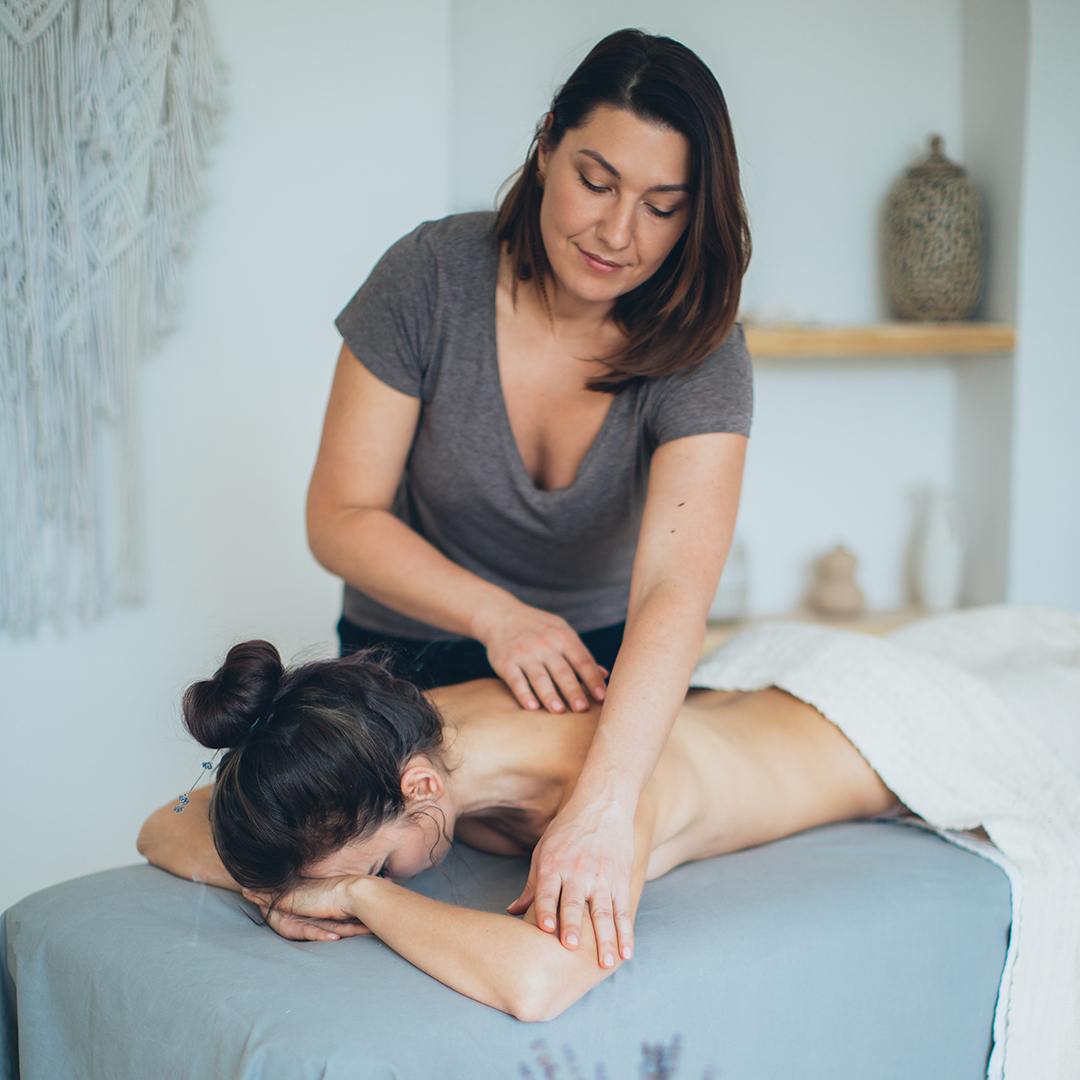Modern gadgets are like candy for the brain—but they are a pain in the neck, literally. Smartphones, for instance, cause most users to drop their heads forward and down. This technology-adaptive head position is now so common that health professionals have a special term for it – “Text Neck.” In our NW massage therapy school, students learn how to take clinical notes and spot postural patterns that point to treatment options. Text Neck is widespread enough to be called an epidemic, so we’re dedicating today’s post to this modern body pattern.

According to the PEW Research Center, 64% of Americans own a smartphone. Moreover, digital analytics firm Flurry has found that smartphone owners spend an average of 177 minutes per day using their mobile device. That’s nearly three hours likely spent in a hunched shape. The forward neck position of a smartphone slump is especially damaging for the spine.
The human head weighs 10-12 pounds. However, the position of the head greatly influences how the head’s weight impacts the spine. In his book The Physiology of the Joints: The Trunk and the Vertebral Column, I.A. Kapandji, MD, points out that for every inch that the head drifts forward, an additional ten pounds of weight are put on the spine. Another way to think about this is to consider the angle of the neck. At a zero degree angle, with the cervical spine in its natural upright position, the weight on the cervical spine is 10-12 pounds. At a 15-degree angle, the weight on the cervical spine jumps to 27 pounds; at 30 degrees, it’s 40 pounds; at 45 degrees, 49 pounds of pressure are put on the cervical spine, and at a 60-degree angle, with the chin nearly at the chest, the cervical pressure is 60 pounds! That’s about as much as an eight-year-old weighs.
Hours spent in a text neck position can lead to health problems:
- Tension, pain, and stiffness in the neck
- Wear and tear on the spine, leading to degeneration.
- Pinched nerves
- Herniated discs
- Loss of the neck’s natural curve.
More extreme outcomes would appear after many hours in the text neck position. Today’s high schoolers spend an average of 5,000 hours per year on their phones. As such, it’s likely that their generation will see significant spinal problems as they age. Poor posture—such as the classic smartphone/laptop slump—can lead to additional problems, including a reduction of lung capacity, headaches, depression, heart disease, and neurological issues.
Given the ubiquity of smartphones, most Americans are likely suffering from text neck. Fortunately, massage can provide relief by increasing body awareness, relieving pain, decreasing stiffness, and reducing inflammation in overused muscles. These are only a few of the massage benefits we emphasize in our school of massage. Portland, OR students in our program learn the ins and outs of how massage works, on micro and macro levels in the body.
If you’re interested in becoming a massage therapist in Portland, it’s smart to begin tracking common postural patterns in the American population. Text neck isn’t likely to diminish going forward. Rather, this modern scourge will only surge as our lives become more enmeshed with technology. Start looking for text neck in the people around you; start noticing its effects in your own body; start asking about it when you receive massage. When you do sign up for massage school, you’ll be that much more prepared to receive wisdom on alleviating text neck symptoms.
Sources:
The Text Neck Explosion—and Other Injuries of the Digital Age, Massage Magazine
‘Text neck’ is becoming an ‘epidemic’ and could wreck your spine, The Washington Post



